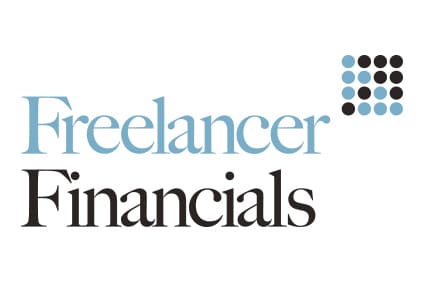Tax advances into the digital age
At the March 2015 Budget, the government set out its vision for a transformed tax system and the end of the tax return. Following on from that announcement HMRC has now provided more detail, including a discussion paper on simpler payments and some illustrative case studies.
By 2016, every individual and small business will have access to their own secure digital tax account, rather like an online bank account, which will enable them to interact with HMRC digitally.
By 2020, businesses and individual taxpayers will be able to register, file, pay and update their information at any time of the day or night, and at any point in the year, to suit them. For the vast majority this will therefore signal the death of the tax return.
The government’s vision is to transform the UK tax system into something completely different.
Four foundations of the transformed tax system of 2020
Tax simplified
Taxpayers should not have to give HMRC information that the department already has, or should be able to get from elsewhere, e.g from employers, banks and building societies and other government departments.
From next year, most taxpayers completing their tax return online will find PAYE pay and tax details together with other government department information, such as state pension, already filled in. PAYE codes will also start to include information on bank and building society interest, removing the need for many taxpayers to report this income separately in a tax return.
Taxpayers will see the information that HMRC holds through their digital tax accounts and be able to check at any time that their details are complete and correct. HMRC will then use this information to tailor the service it provides, according to each taxpayer’s individual circumstances. In 2016, HMRC will consult on how information from more third parties might reduce the reporting burden on taxpayers.
Making tax digital for businesses
Businesses should not have to wait until the end of the tax year or even longer before knowing how much tax they should pay.
HMRC will collect and process information affecting tax in as close to real time as possible, to stop tax due or repayments owed from building up. From April 2018, businesses, including everyone who is self-employed and those letting out property will update HMRC at least quarterly where it is their main source of income (or a secondary source of income above £10K and their main income is from employment or a pension).
Businesses will be required to use digital tools, such as software or apps, to keep records of their income and expenditure. HMRC will ensure that free apps and software products are available but many businesses and their advisers may choose to use commercially available tax software packages.
The government is also consulting on options to simplify the payment of taxes, including whether to align payment dates and bring them closer to the point when profits arise, so that businesses make a single regular payment that covers all of the tax that they owe.
Making tax digital for individuals
Individual taxpayers will interact with HMRC digitally and at any time to suit them.
By April 2016, every individual and small business will have access to a digital tax account. These digital tax accounts will present individual taxpayers with a personalised picture of their tax affairs, along with prompts, advice and support through webchat and secure messaging.
Tax in one place
Currently, most taxpayers cannot see a single picture of their liabilities and entitlements in one place and HMRC want to change that.
By 2020, taxpayers will be able to see their complete financial picture in their digital account, just like they do in their online banking. They will also be able to set an overpayment of one tax against the underpayment of another, so it will feel like paying a single tax.
Death of the tax return
Over the next five years, the proposed changes will bring about the end of the tax return for millions of taxpayers because:
- Most businesses will keep their records using digital tools and send that information at least quarterly to HMRC.
- In Spring 2016, HMRC will consult on where it might obtain information directly from third parties, removing the need for taxpayers to report it.
- Taxpayers with changes to report or other information to submit will do so through their digital tax account.
- A new system of online billing will collect outstanding tax which cannot be collected through PAYE with no need for Self Assessment tax returns.
- Those who currently choose to complete tax returns simply to check their tax is in order will find all the information they need in their digital tax account.
Making tax digital for small companies – ‘Dave’ a fictional study by HMRC
To give contractors an insight as to how this tax digital revolution will look and feel, HMRC have created their own case study of a director of a small company.
Dave’s story
Dave and his wife are directors of a small supply and fit plumbing company. It’s busiest during the winter months and steady throughout the rest of the year. They have recently registered the company for VAT. Dave and his wife are the only employees.
What does tax feel like for Dave now?
- Dave keeps the company’s business records on a spreadsheet.
- He has an accountant prepare the Corporation Tax return.
- Income fluctuates over the year and he worries about cashflow.
- He also worries about his tax obligations and keeping on top of different reporting/payment cycles for different taxes.
- Whilst other areas of the company are easily managed ‘on the go’ tax management is not.
- Dave feels disconnected from the company’s tax position and misses out on useful support because he’s not aware of it.
How will making tax digital help Dave?
- Dave chooses a third party record keeping App to help him stay up-to-date throughout the year.
- The App supplies Dave’s accountant with the company’s records throughout the year and it also prompts Dave in real time to check potential errors.
- Updating HMRC quarterly gives Dave more up-to-date information on the company’s cash flow and greater certainty about the company’s tax bill.
- He also links his company bank account to the App so that income and expenditure automatically populates the company’s quarterly update.
- All of Dave’s tax information is together in a single place. All he needs to do is review it and update the company’s digital tax account with HMRC.
- Dave has also authorised his accountant to view his digital tax account.
- Through the App, HMRC can also signpost Dave to relevant help and support such as webinars.
- The support feels tailored to the company and helps Dave to make the right decisions for the company.
Tax digital represents a major transformation of the UK tax system but also a logical one that thrusts our tax system firmly into the 21st century. The eradication of bureaucratic form filling, removal of missed deadlines and unnecessary penalties will, no doubt, be welcomed with open arms. Whilst HMRC have provided us with a roadmap and timeline we will need more flesh to be added to the bones before we can turn our applause into jubilation, for example, will there be a future system of fines for not reporting information or paying tax on time and to what extent will third party information be provided to HMRC?





“He also links his company bank account to the App so that income and expenditure automatically populates the company’s quarterly update”.
And while he waits for the App to do this, he watches the pigs fly by. The idea that what’s on a bank statement could be automatically assigned to income and expenditure or even matched to supplier and customer names in an accounts system shows a worrying lack of knowledge. It doesn’t inspire confidence in the rest of the proposals.
I disagree with you Julian, this is the way most small businesses work anyway, they get their bank statement downloaded within their accounting package, and then allocate items within the system, to PnL or whatever is appropriate. There is no reason why that process, via the accounting package itself or a separate app, could not upload the relevant part of that data, primarily income and expenses, to the person’s digital tax account. Either within the app or the tax account the individual (or their accountant in many cases) can then apply adjustments, for instance, to disallow expenditure for tax purposes. The idea of a known real-time tax position, would aid most small companies / one man bands who don’t have a great deal of tax knowledge BUT also don’t want to wait until the end of the year to know what their tax liability. The idea of off-setting different taxes withing the digital account also makes sense.
This is sensible but isn’t the magic wand that solves all admin issues. The cynic in me also wonders if the real time information on tax position won’t be accompanied by real time payments to HMRC?
One obvious problem for Dave is if he does 10% of his transactions in cash which he doesn’t pay in because of bank charges so still has to reconcile the till roll with everything else by hand.
complete nonsense, lost in academia with no grasp of reality. Legislation currently dictates you have to update your tax affairs every year, that is reasonable, and allows you to do it efficiently in terms of time.
Updating more than once a year is obviously obviously obviously going to be more expensive and less time efficient.
Too many people making important decisions because hmrc have forgotten they are supposed to provide a service and instead spend millions billions on changing something that already works.
Make the idiots redundant instead.